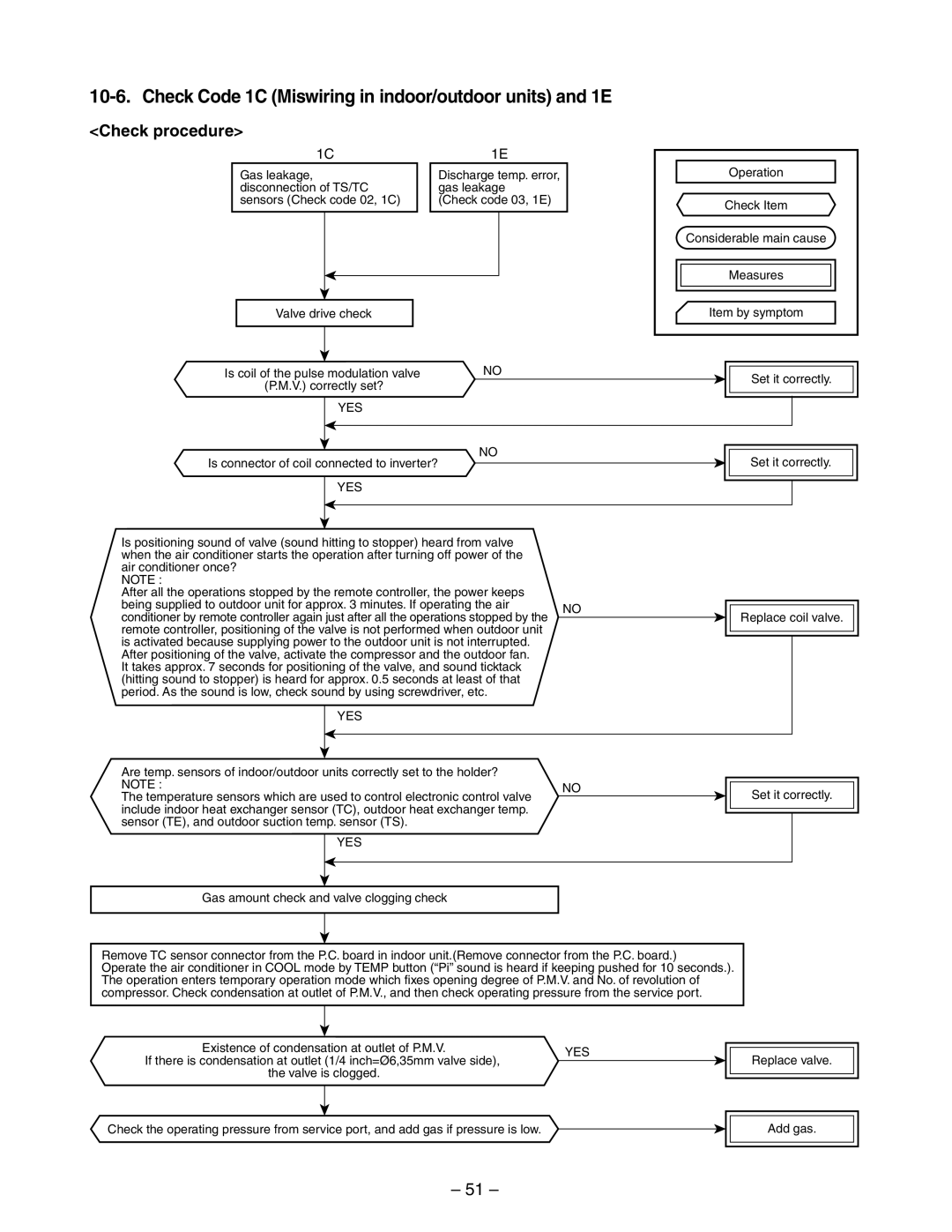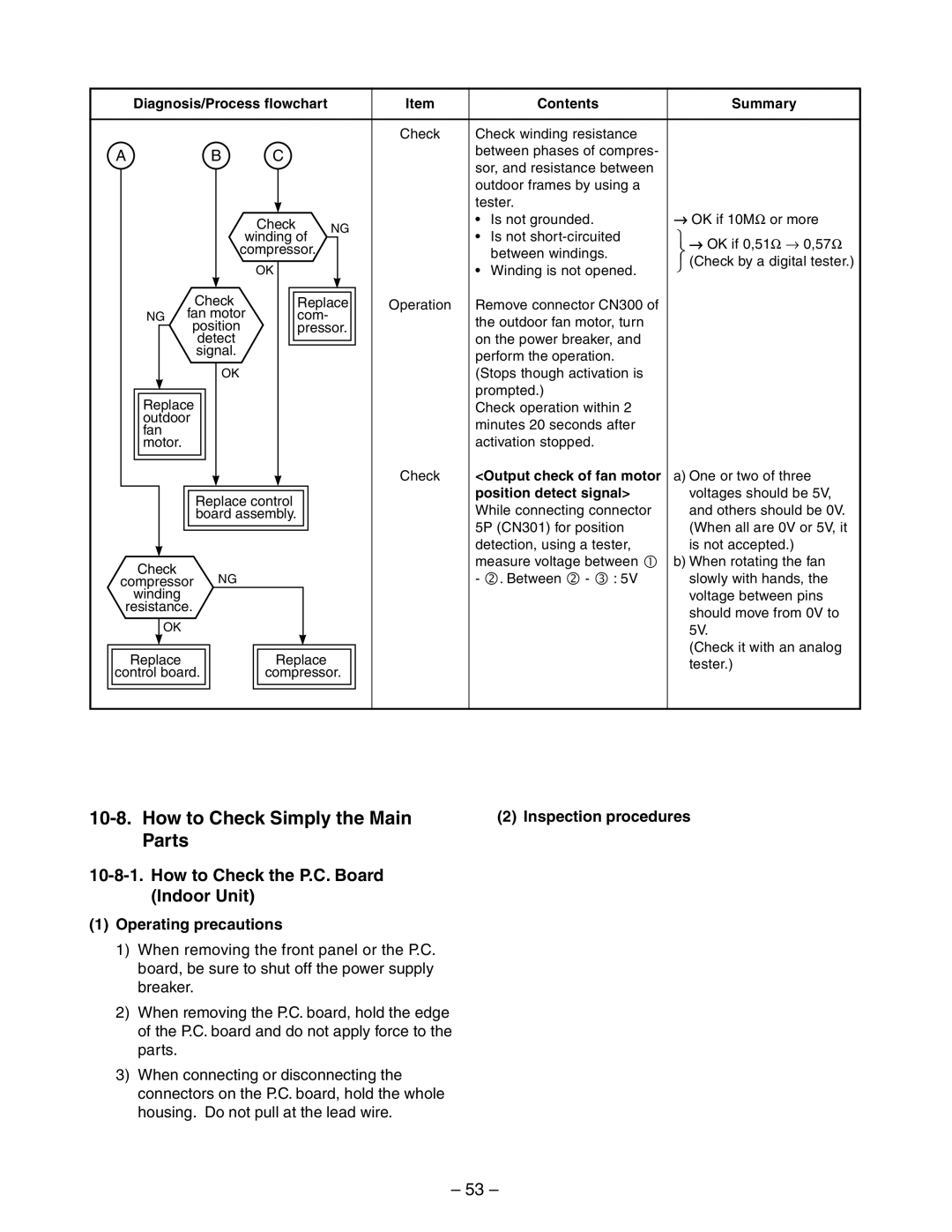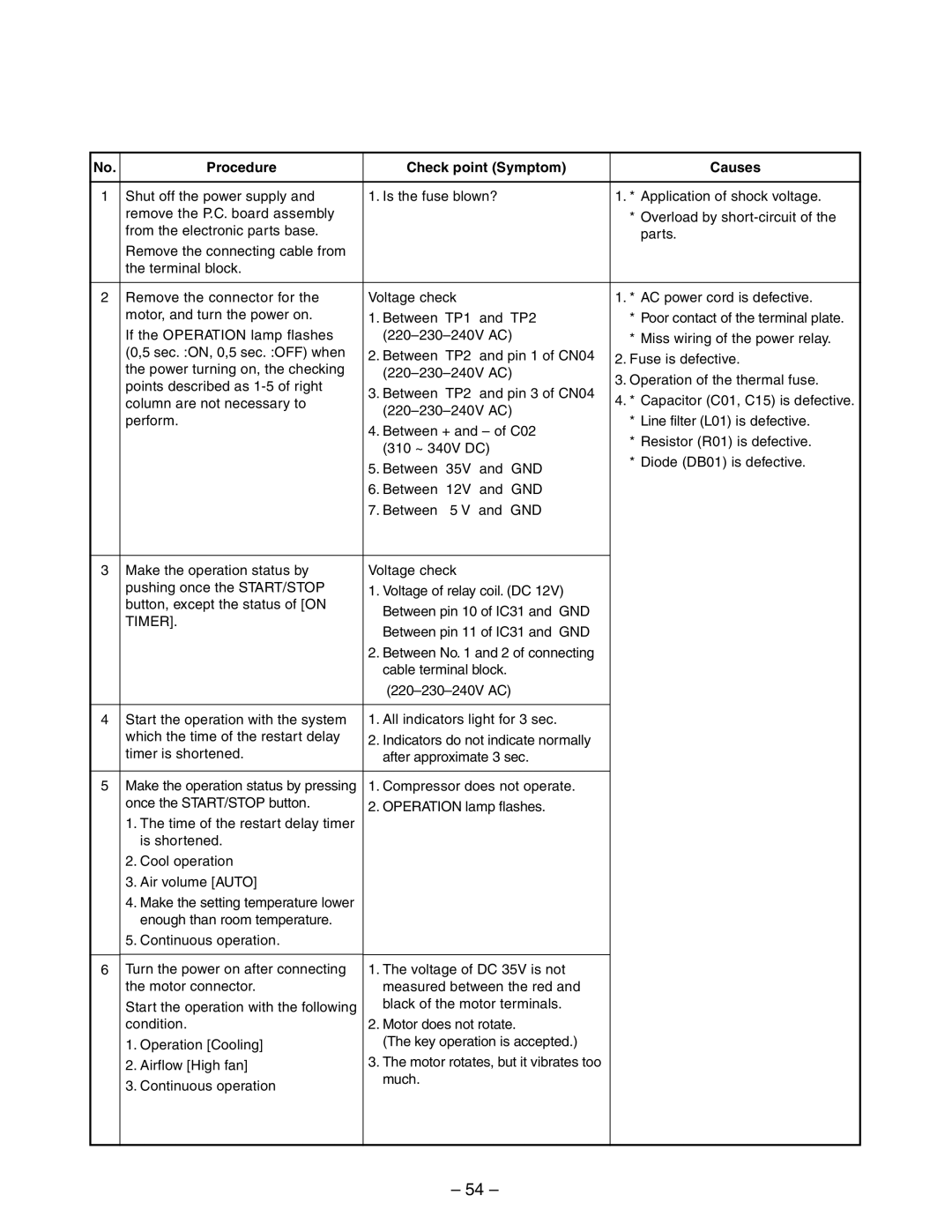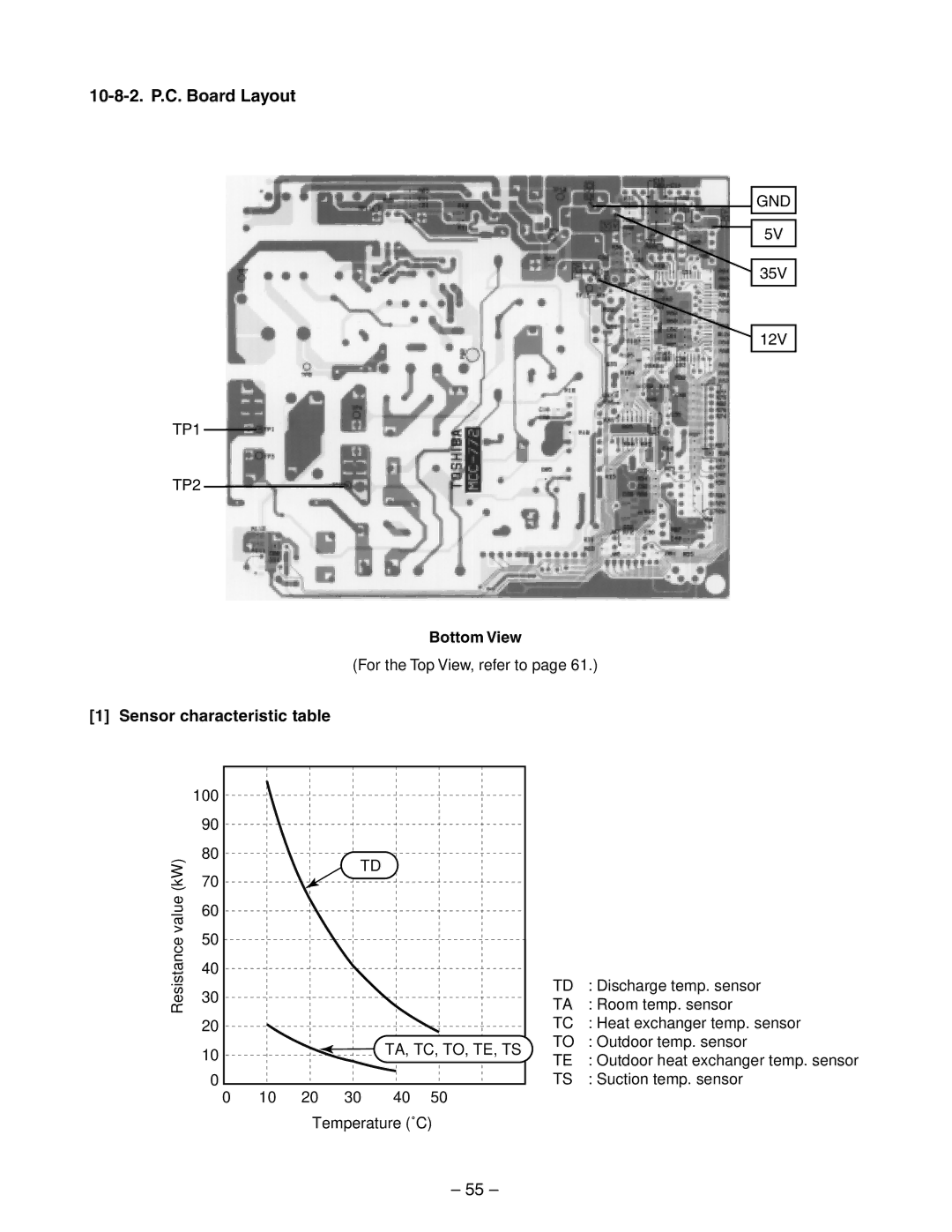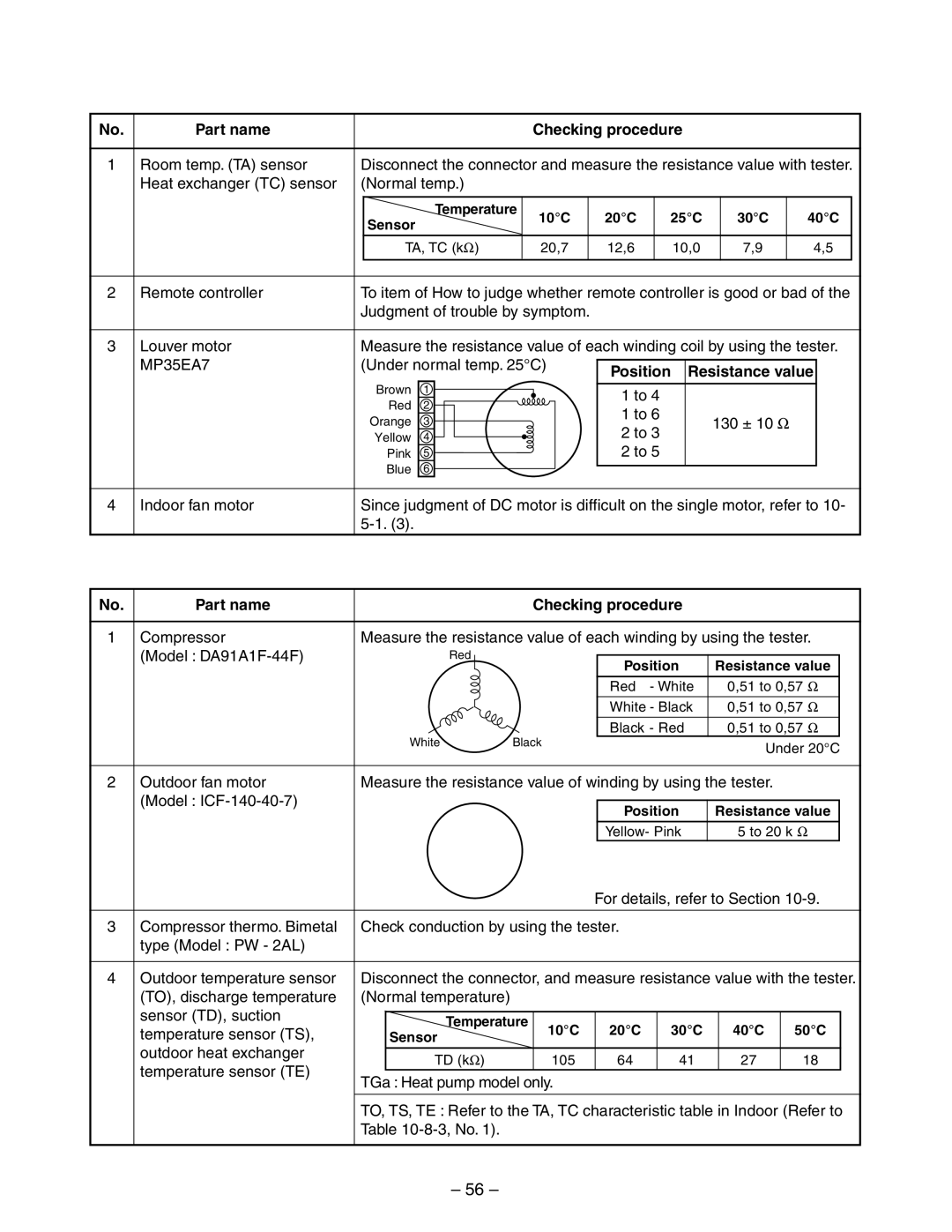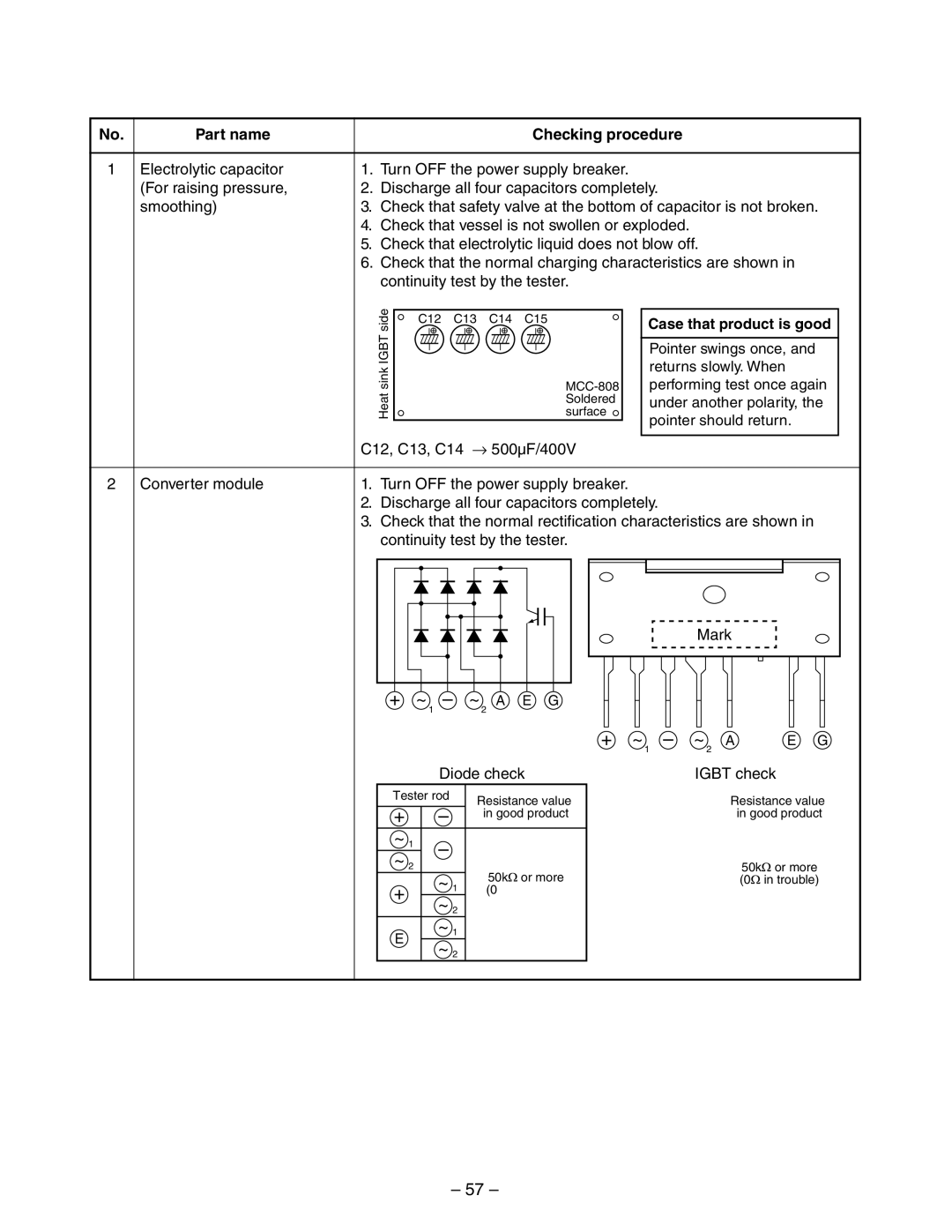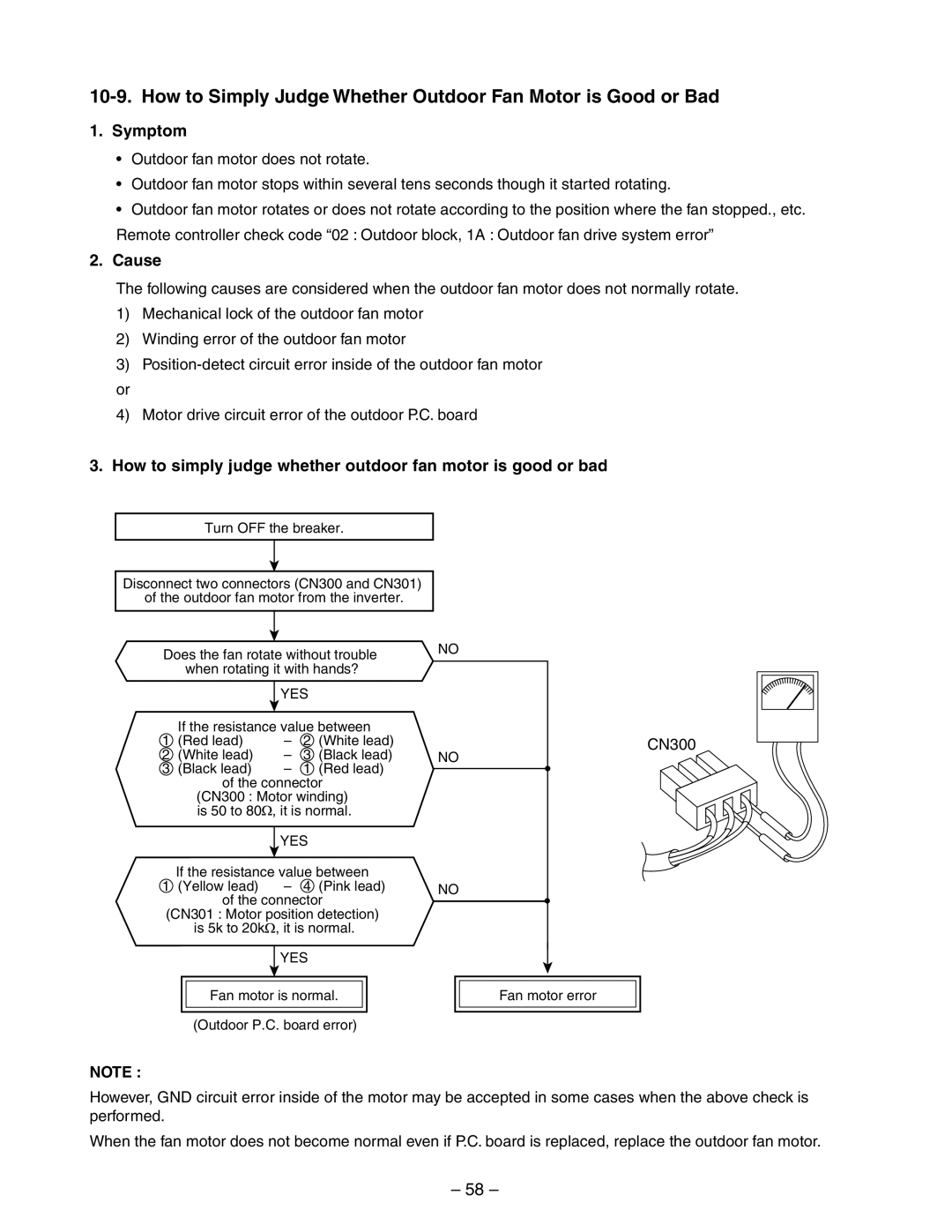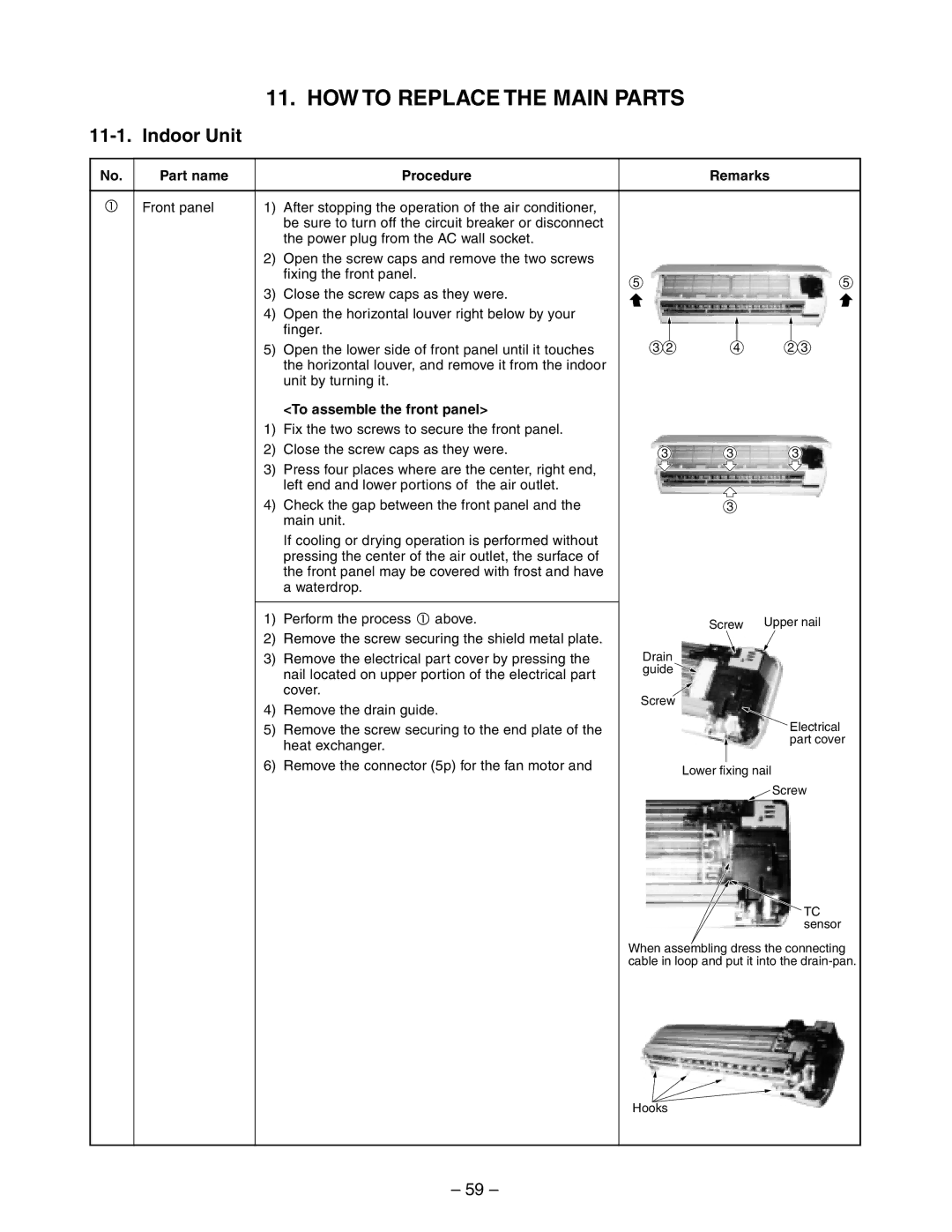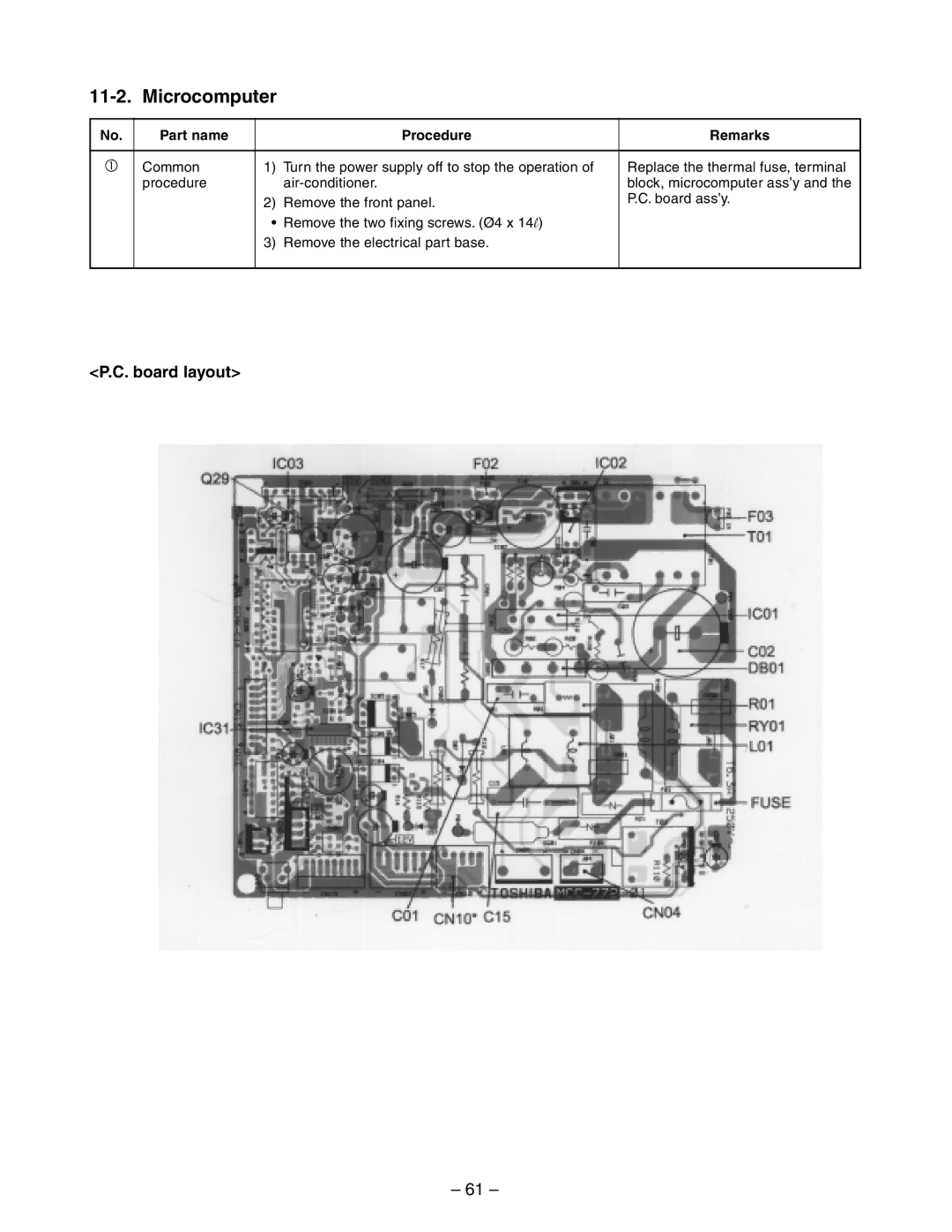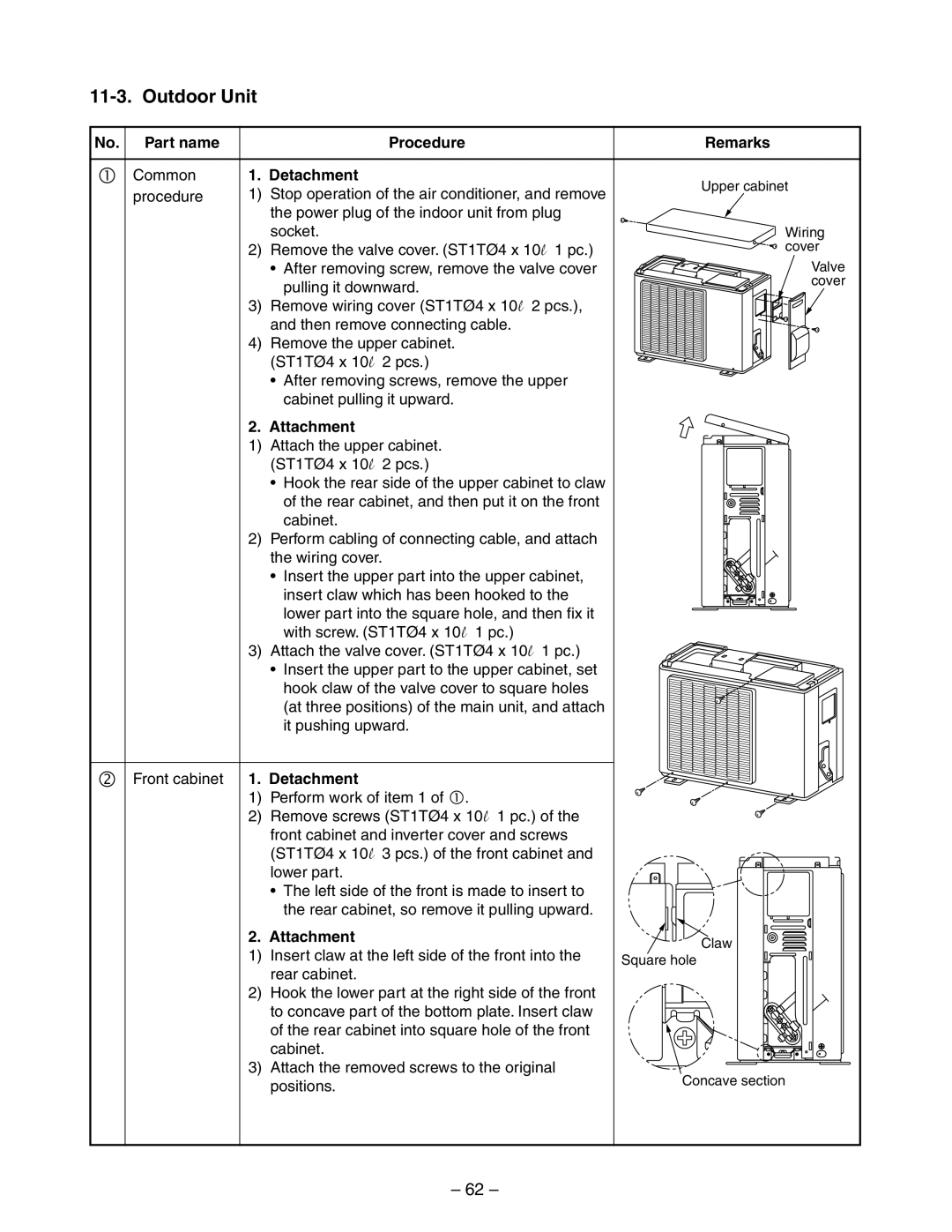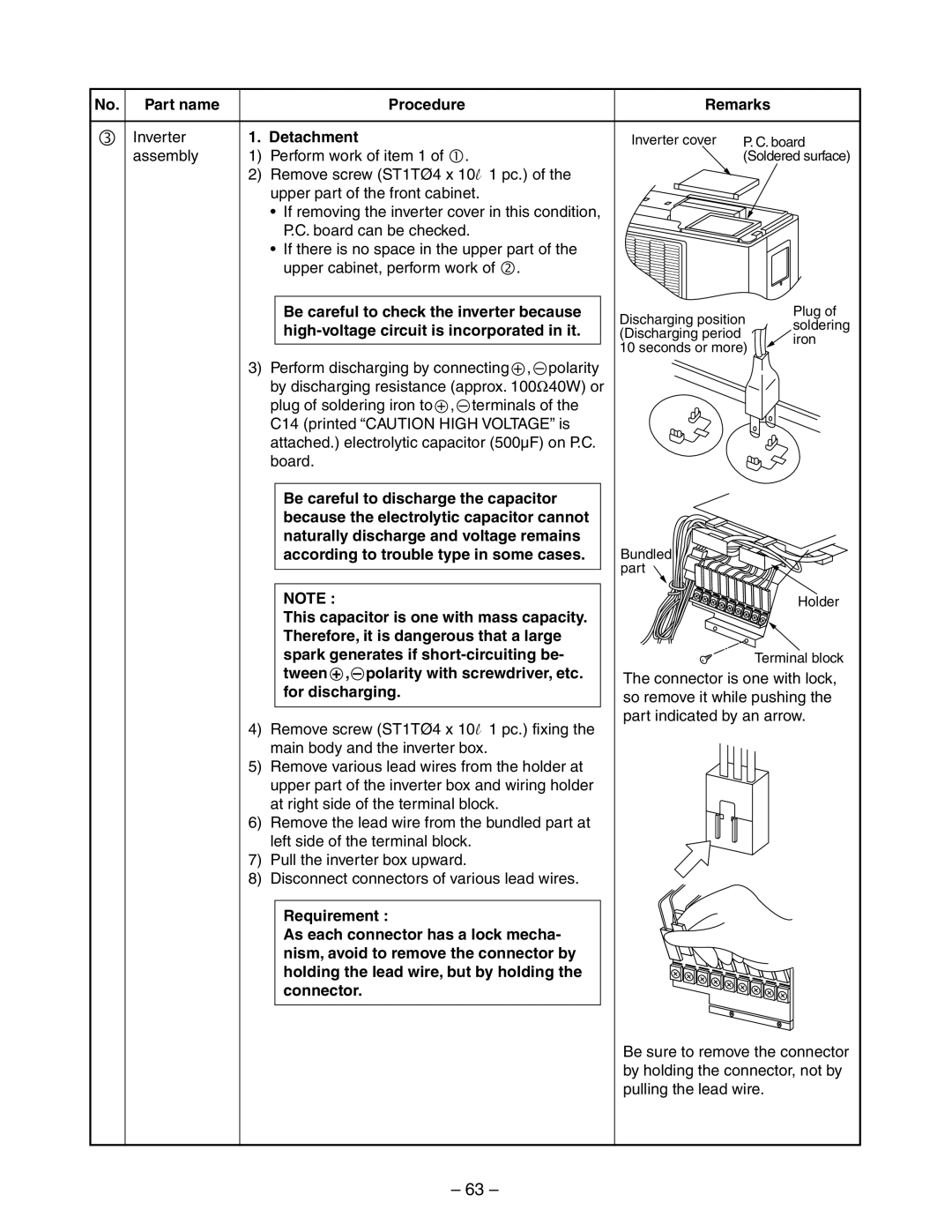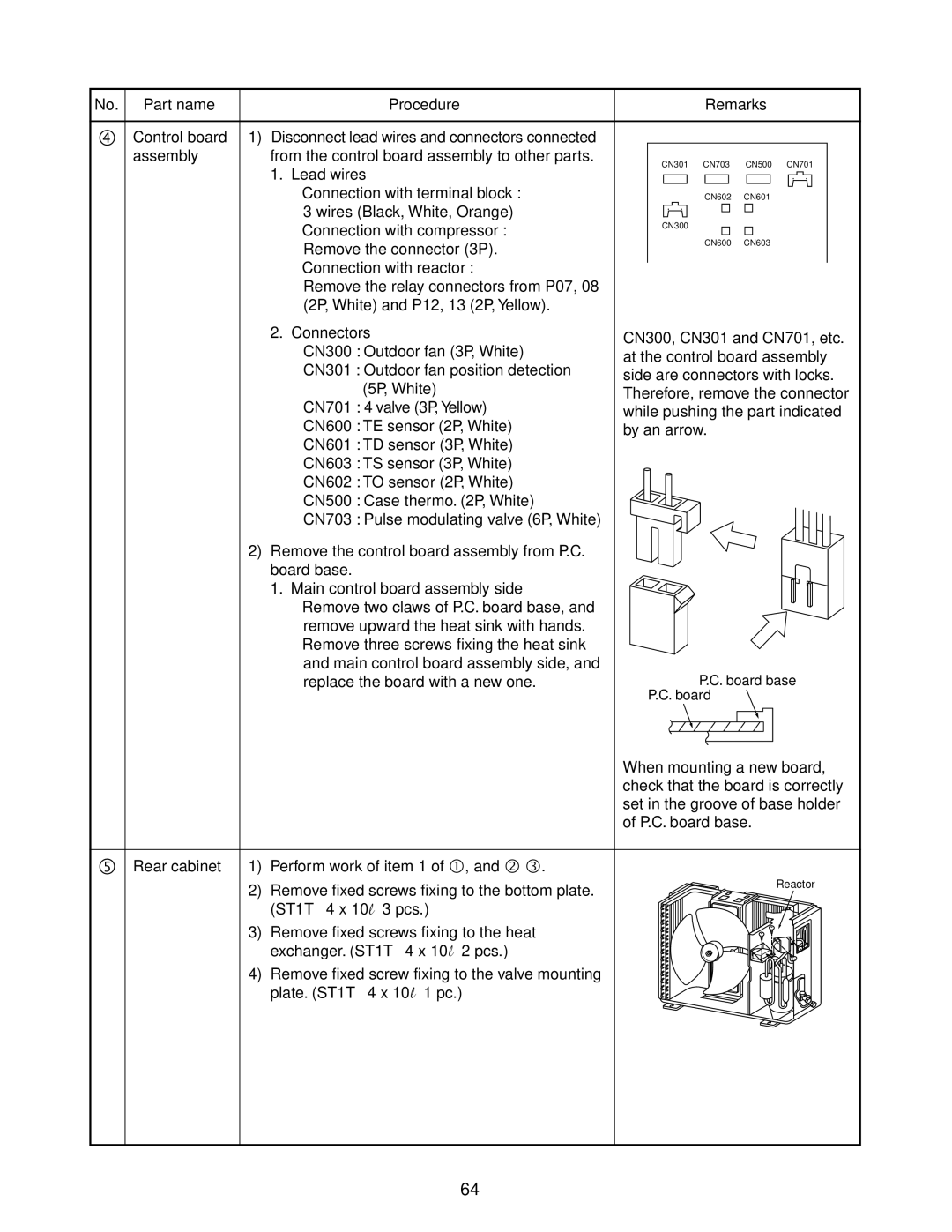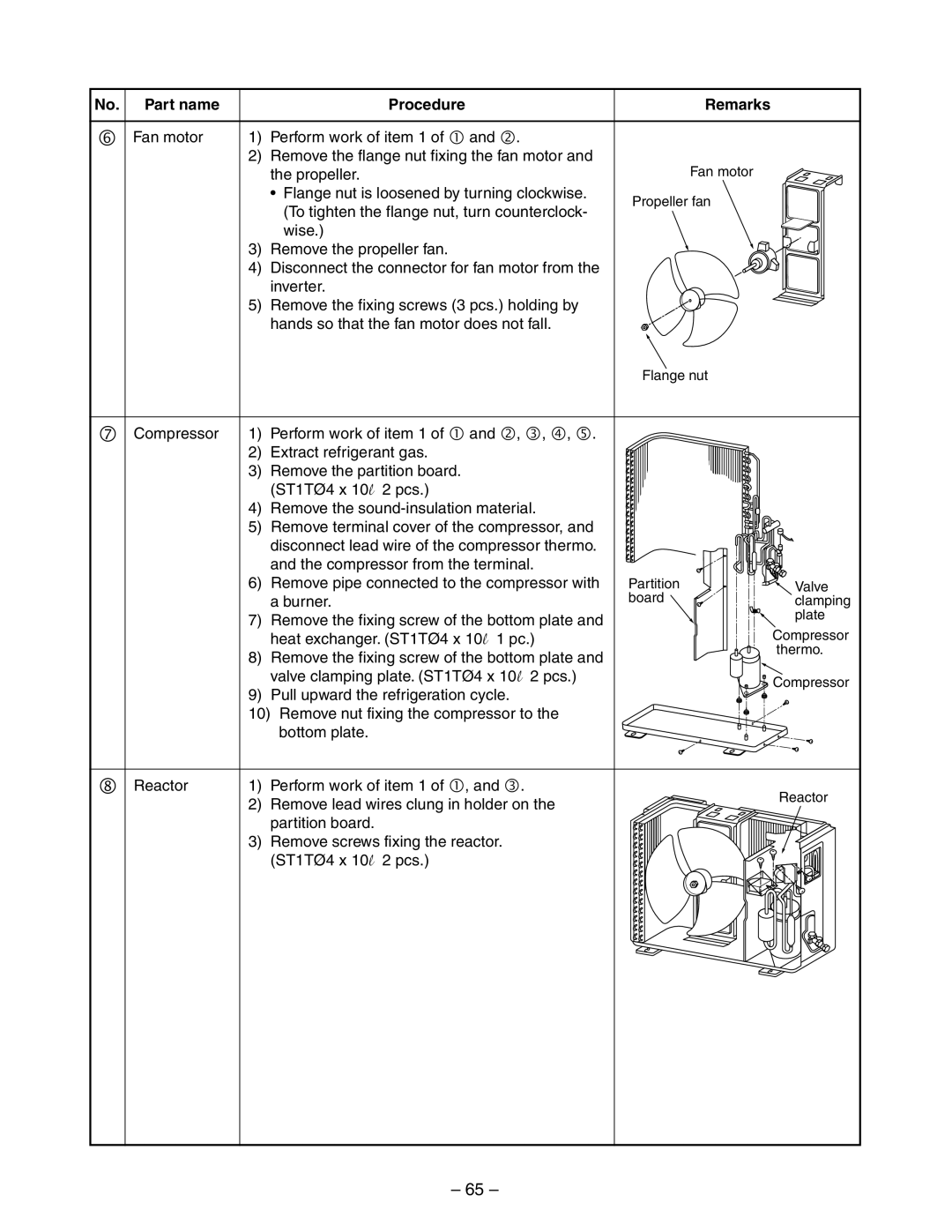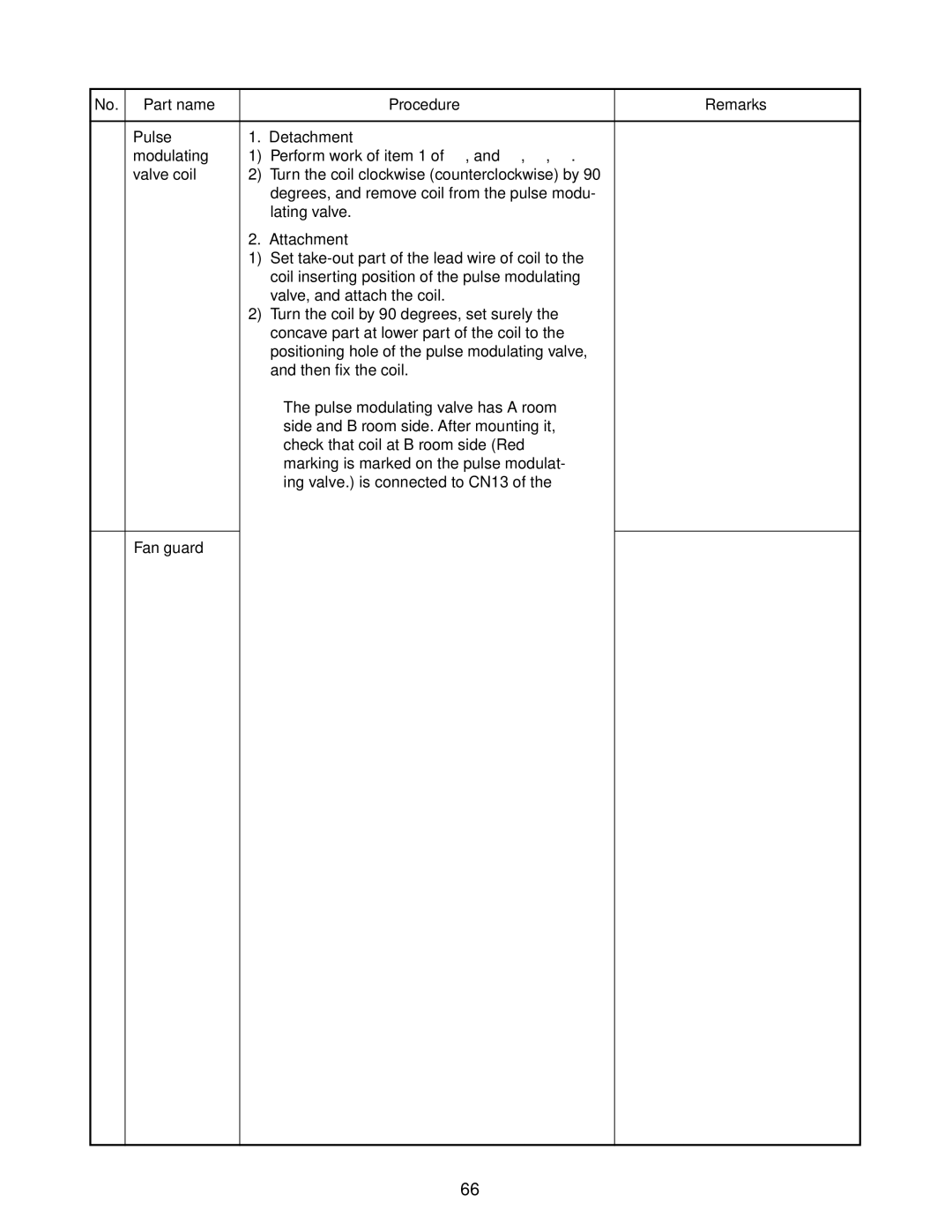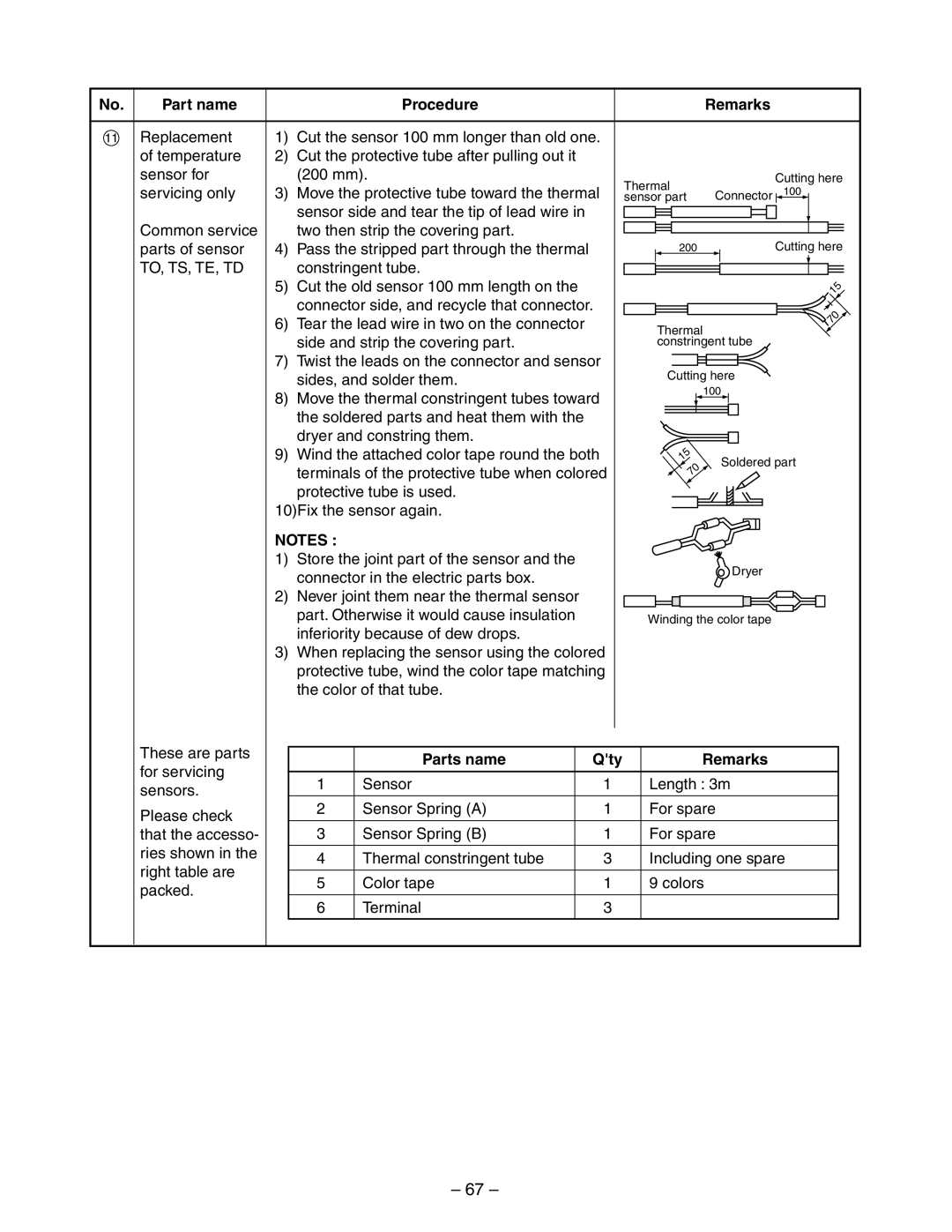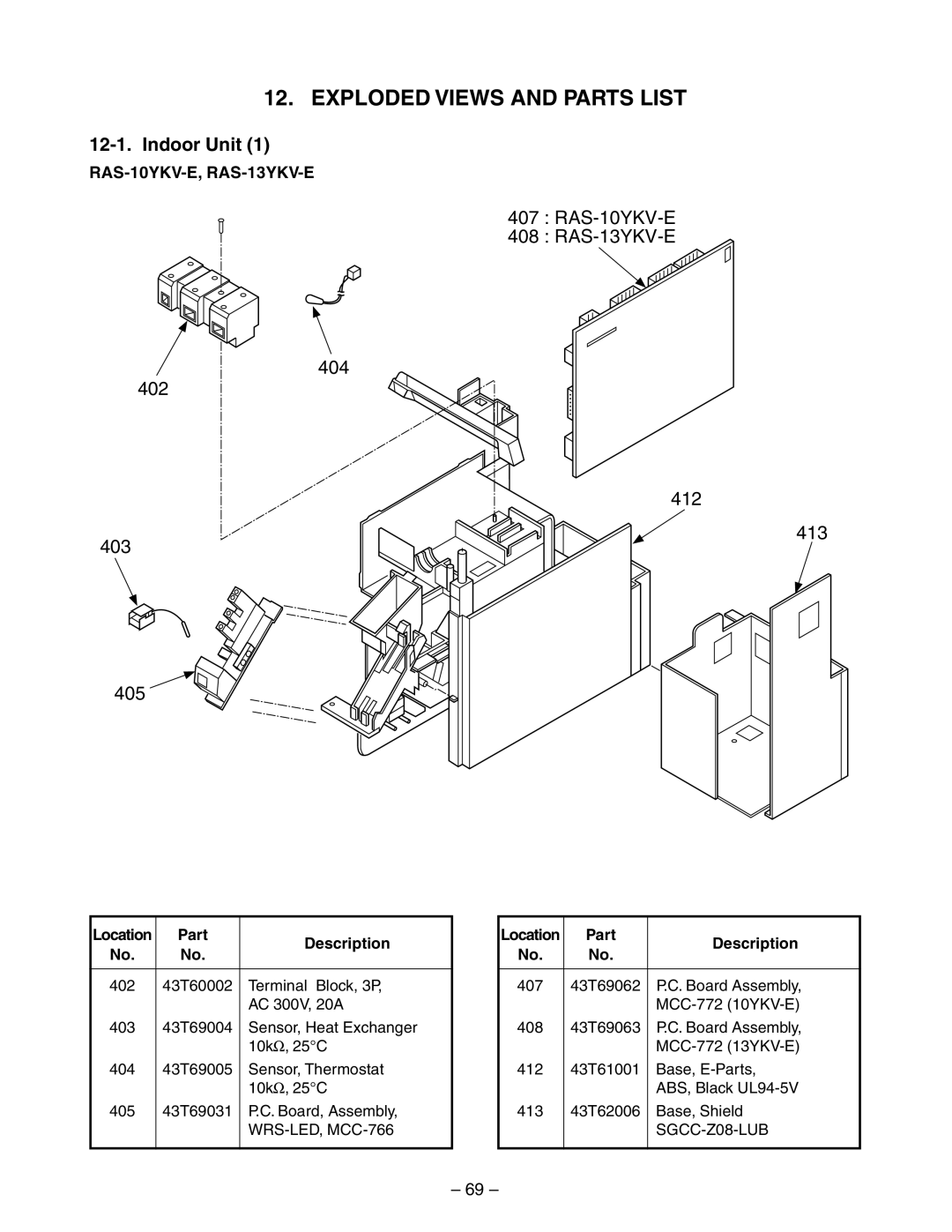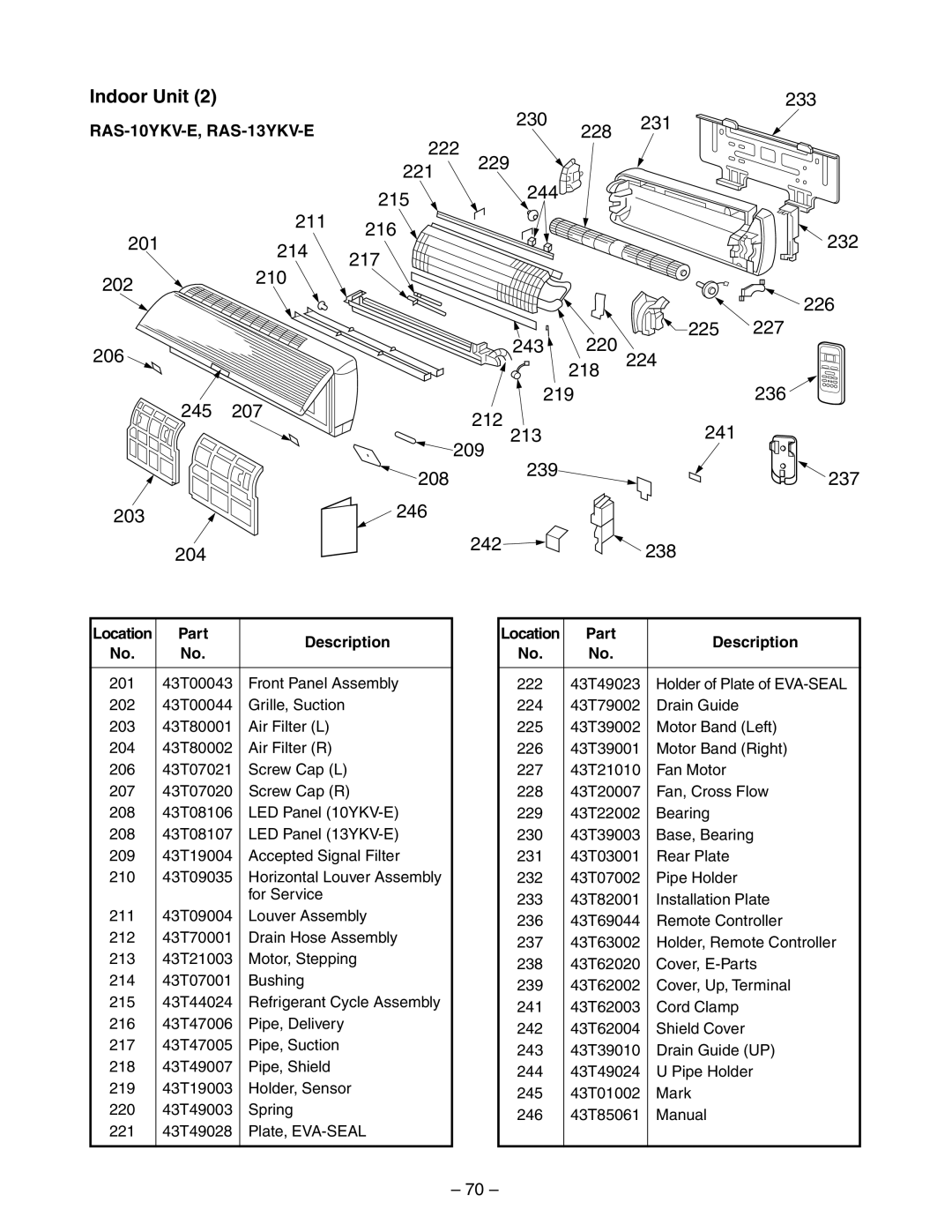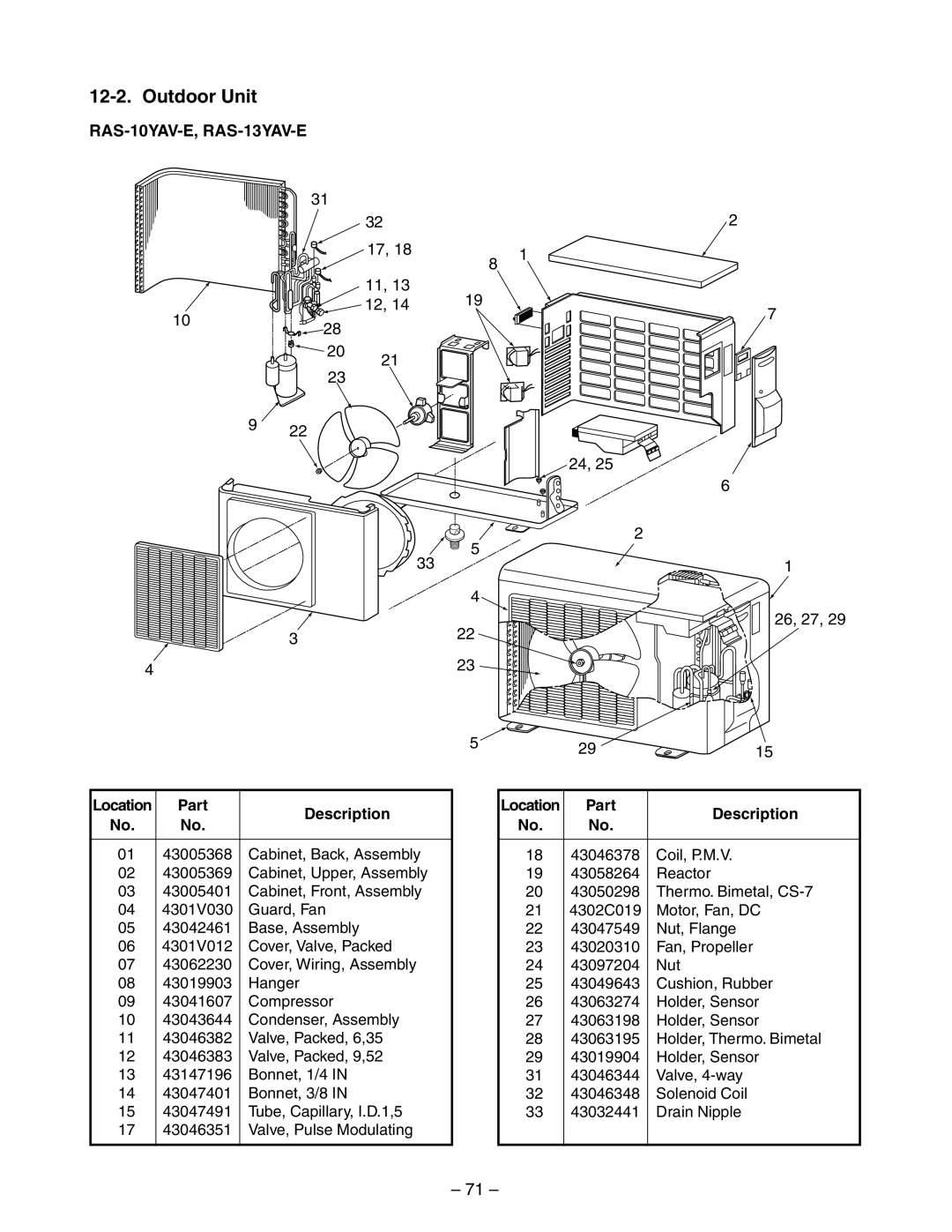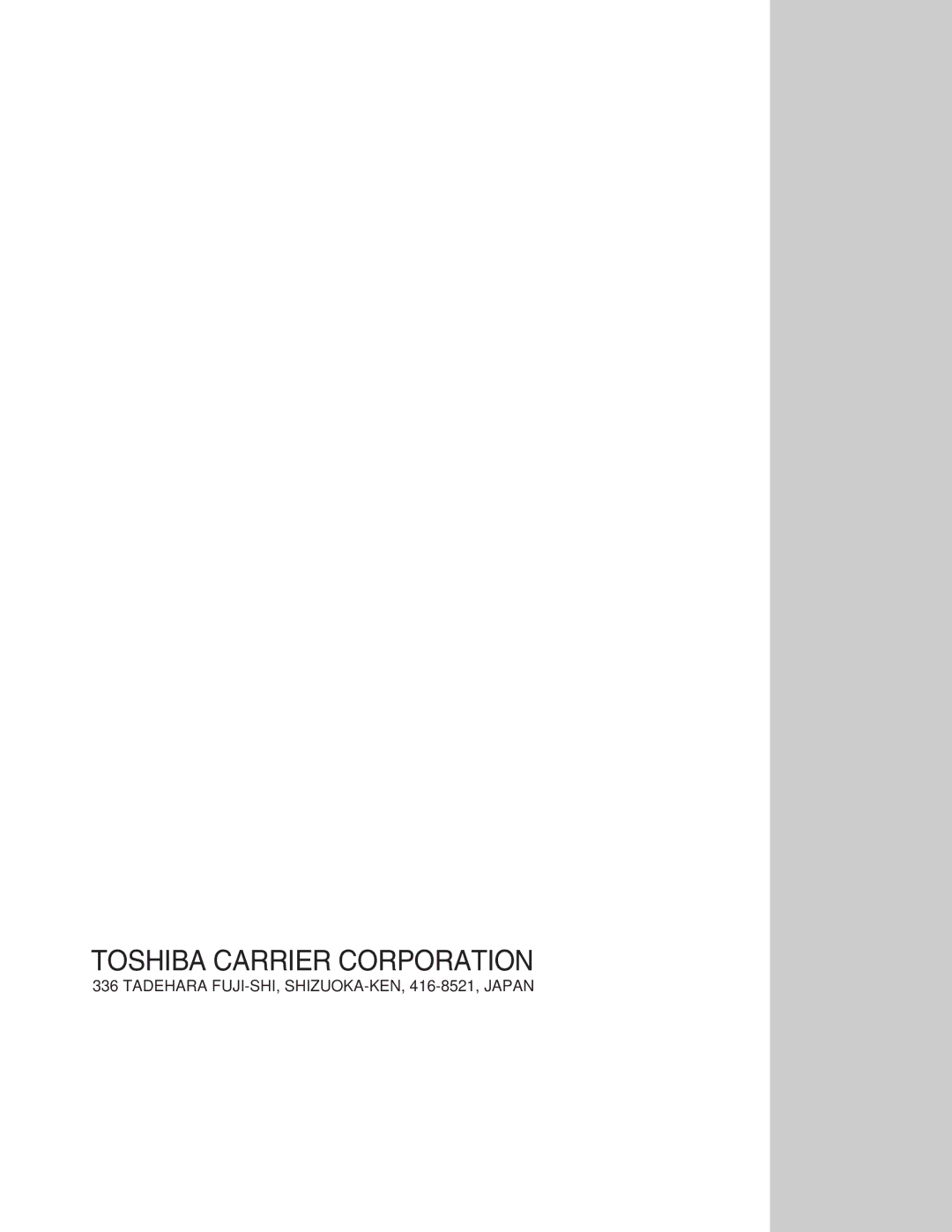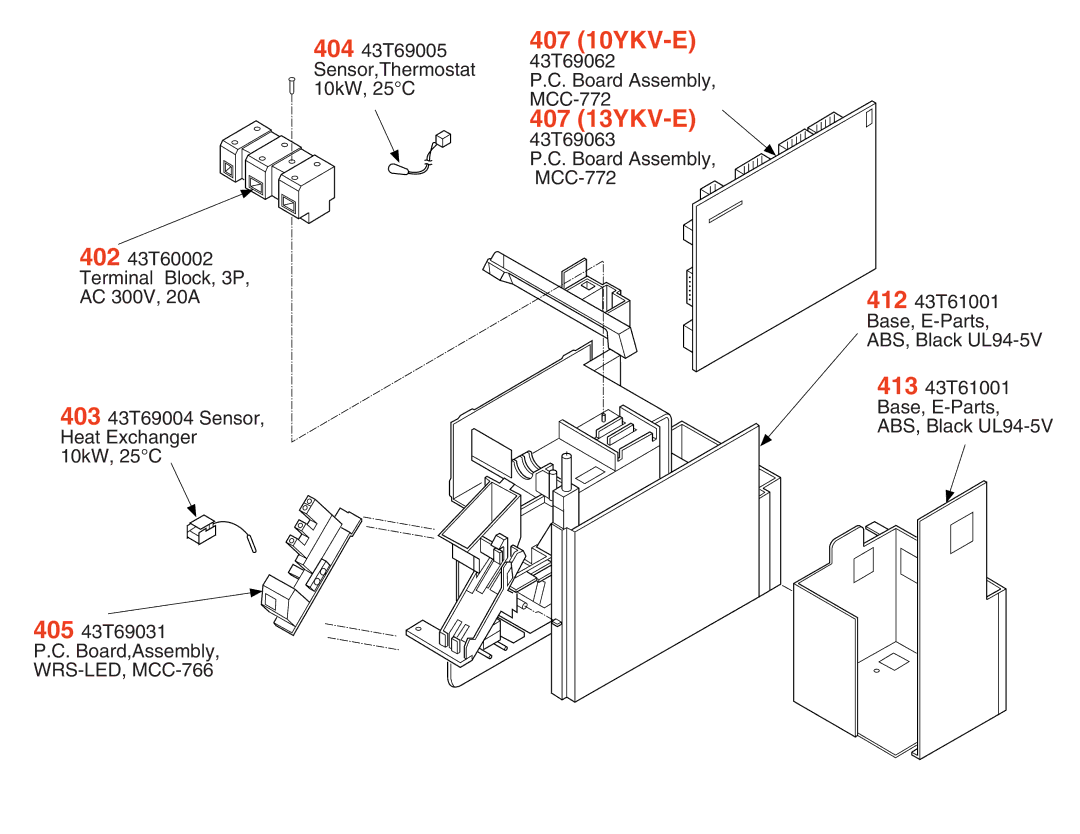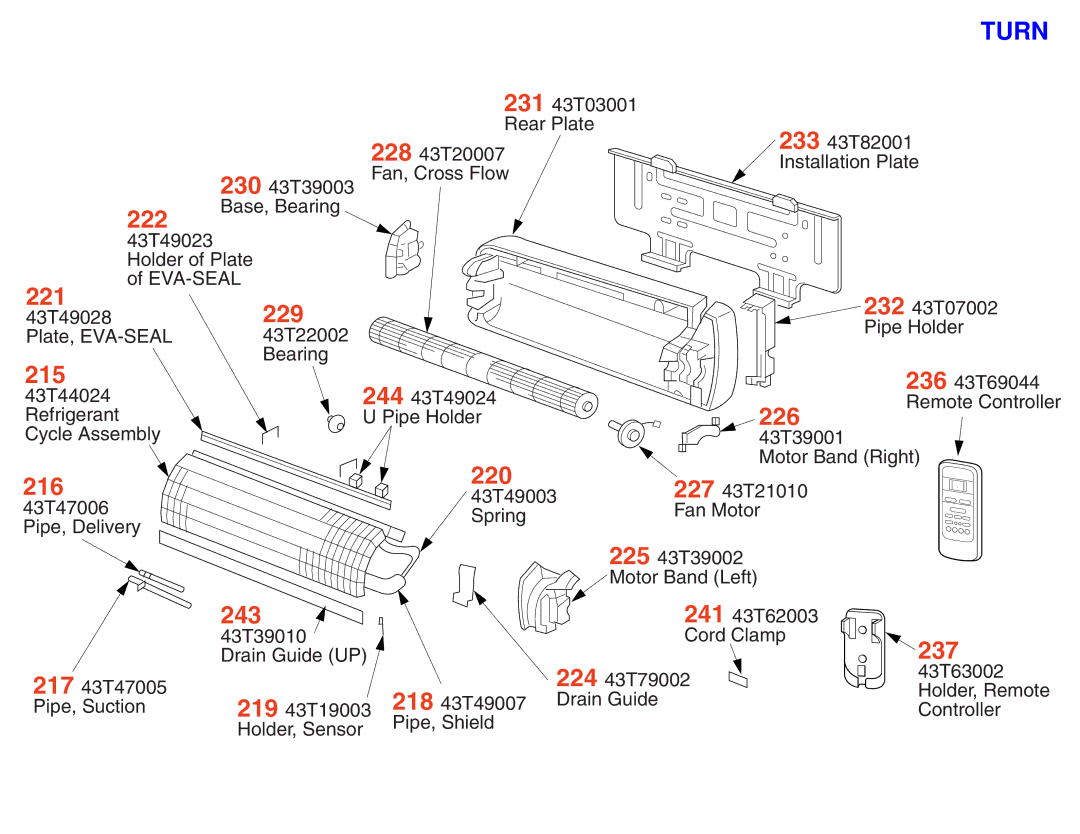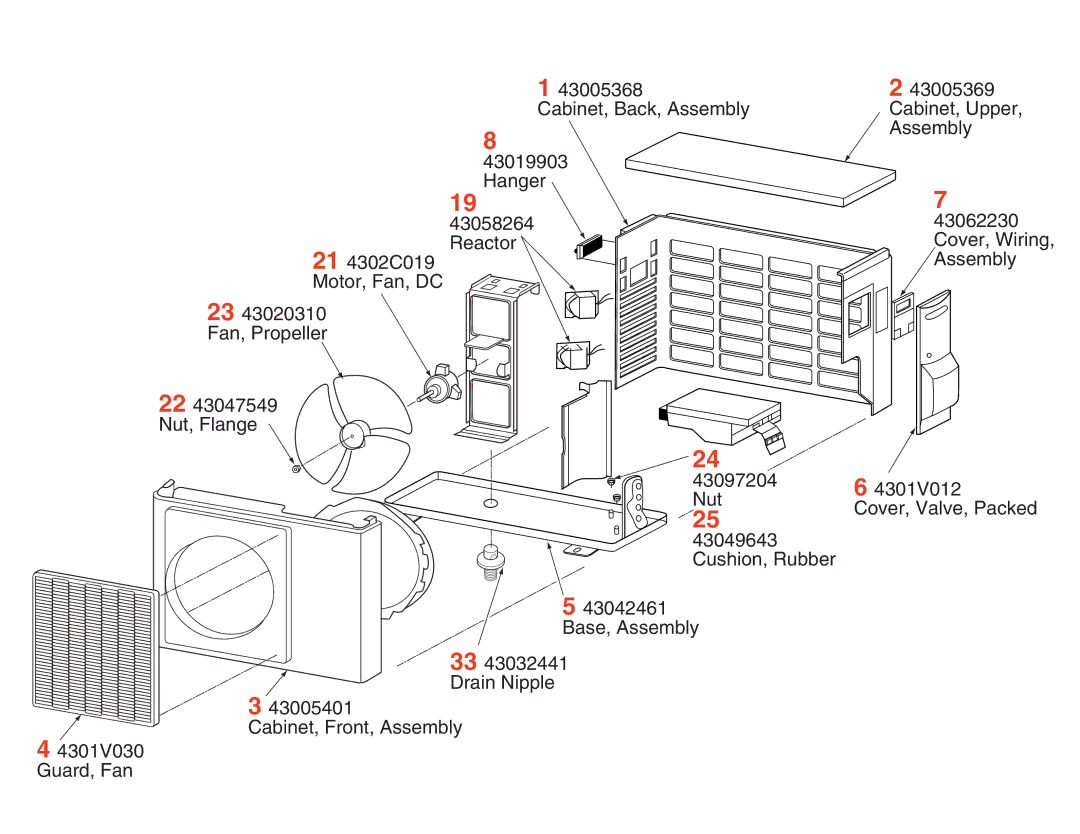
No. Part name |
| Procedure | Remarks |
| |
S Inverter | 1. Detachment | Inverter cover | P. C. board | ||
assembly | 1) Perform work of item 1 of Q. |
| (Soldered surface) | ||
| 2) Remove screw (ST1TØ4 x 10l 1 pc.) of the |
|
|
| |
| upper part of the front cabinet. |
|
|
| |
| • | If removing the inverter cover in this condition, |
|
|
|
|
| P.C. board can be checked. |
|
|
|
| • | If there is no space in the upper part of the |
|
|
|
|
| upper cabinet, perform work of R. |
|
|
|
|
| Be careful to check the inverter because | Discharging position | Plug of | |
|
|
| soldering | ||
|
| (Discharging period |
| ||
|
|
| iron | ||
|
|
| 10 seconds or more) | ||
|
|
|
| ||
3)Perform discharging by connecting + , – polarity by discharging resistance (approx. 100Ω 40W) or
plug of soldering iron to + , – terminals of the C14 (printed “CAUTION HIGH VOLTAGE” is attached.) electrolytic capacitor (500µF) on P.C. board.
Be careful to discharge the capacitor |
| |
because the electrolytic capacitor cannot |
| |
naturally discharge and voltage remains |
| |
according to trouble type in some cases. | Bundled | |
| part | |
NOTE : | Holder | |
This capacitor is one with mass capacity. |
| |
Therefore, it is dangerous that a large |
| |
spark generates if | Terminal block | |
tween + , – polarity with screwdriver, etc. | The connector is one with lock, | |
for discharging. | ||
so remove it while pushing the | ||
| ||
| part indicated by an arrow. |
4)Remove screw (ST1TØ4 x 10l 1 pc.) fixing the main body and the inverter box.
5)Remove various lead wires from the holder at upper part of the inverter box and wiring holder at right side of the terminal block.
6)Remove the lead wire from the bundled part at left side of the terminal block.
7)Pull the inverter box upward.
8)Disconnect connectors of various lead wires.
Requirement :
As each connector has a lock mecha- nism, avoid to remove the connector by holding the lead wire, but by holding the connector.
Be sure to remove the connector by holding the connector, not by pulling the lead wire.
– 63 –
